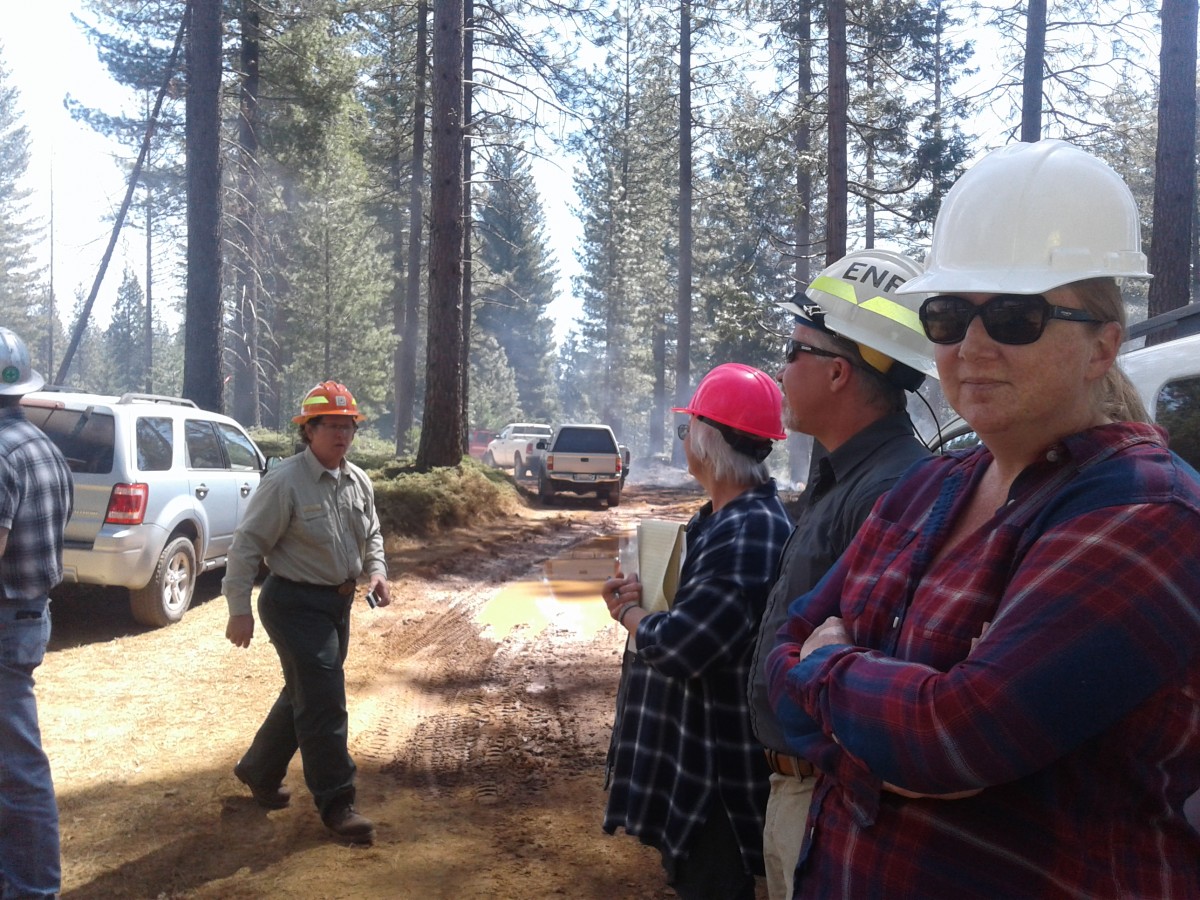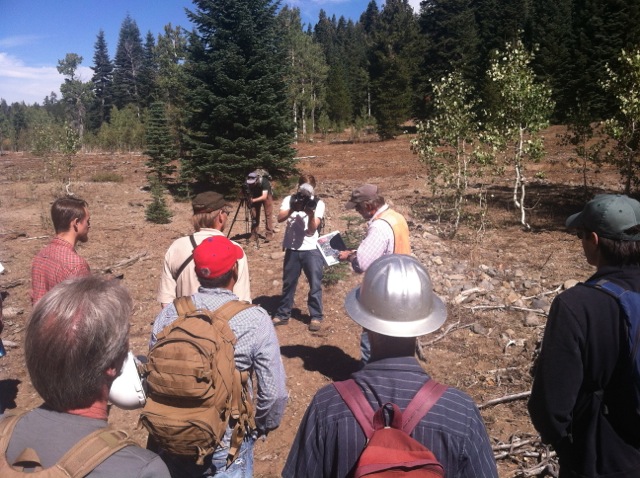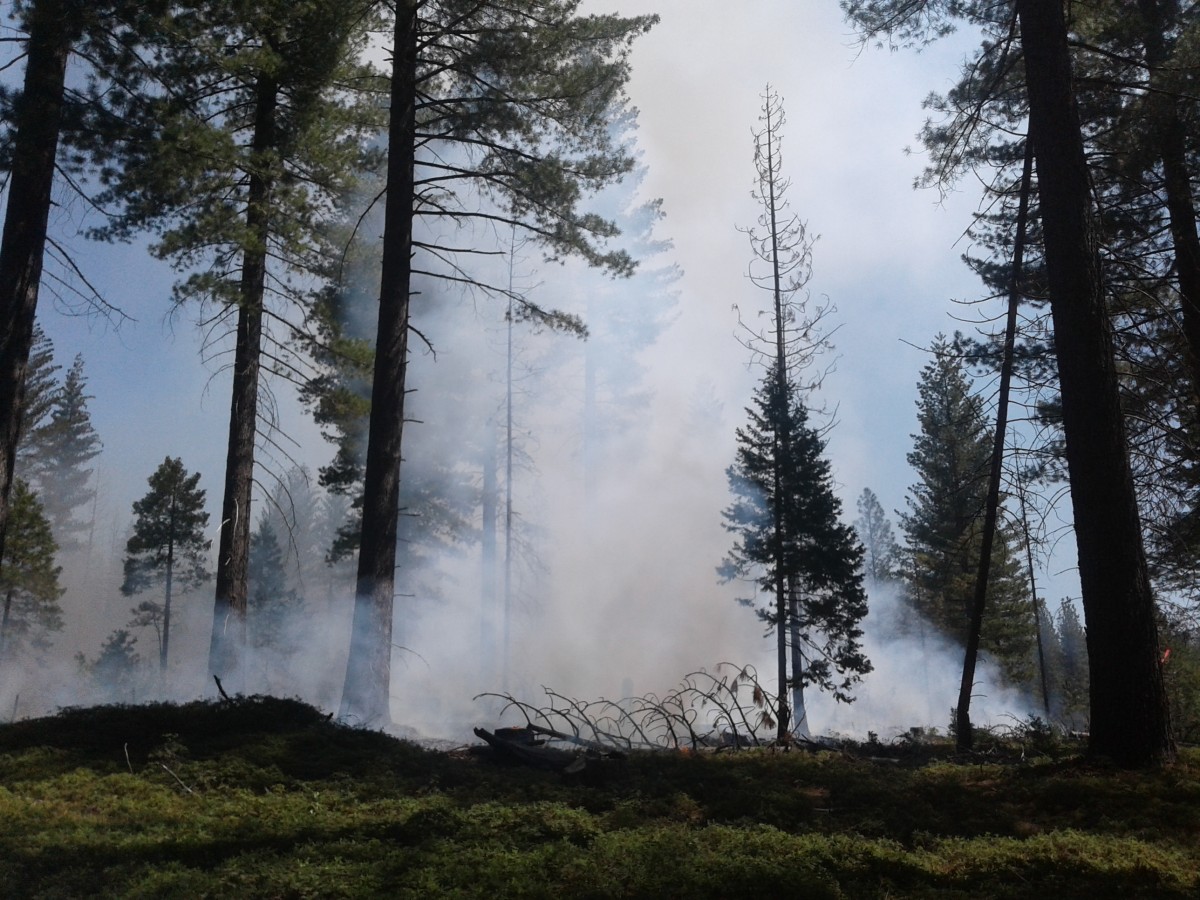In November, as CSERC's most recent hire, I attended my first collaborative stakeholder group, the Amador-Calaveras Consensus Group (ACCG), as a representative of our organization. The group consists of members with diverse and often conflicting interests, including environmentalists, loggers, business owners, and residents, alongside federal, state, and local officials. Our mission is to promote fire safe communities, healthy forests and watersheds, and sustainable local economies.
Through discussion and debate, we work to find common ground on controversial issues. We strive to develop projects that are supported by everyone within the group, thus avoiding the pitfalls of lawsuits, natural resource damage, and contentious, drawn-out projects.

ACCG members on a field trip to see prescribed burns on SPI and BLM land.
While the majority of our efforts focus on Forest Service projects, including treatments like hazard tree removal, tree thinning, and fuel break maintenance, we also discuss treatments on land managed by the Bureau of Land Management and private land. It can be overwhelming and disorienting to attend these meetings and hear about the impressive range of projects in progress, spanning throughout Calaveras and Amador County - it certainly was for me. However, with time, I became more familiar with the project areas and the contentious issues surrounding treatment implementation.
In order to negotiate for effective middle ground approaches, it is important to understand the concerns, needs, and desires of every ACCG participant. While we all attempt to listen respectfully, issues of community safety, preservation of natural resources, and the local economy often stir strong emotions. A current goal of ours is to define Zones of Agreement - that is, to find where we have common ground regarding topics like herbicide use, treatments in sensitive species habitat, large tree removal, and riparian conservation objectives. At each general meeting, we also hear guest lectures from influential scientists and agency representatives, which can supplement the knowledge of the group and facilitate more informed discussions.

An ACCG field trip inspires discussion.
The Forest Service has begun using an expedited planning process for forest treatments known as a Categorical Exclusion designated by the 2014 Farm Bill. Categorical Exclusions (CEs) mean that the Forest Service can go through a less rigorous process than a full Environmental Assessment prior to implementing a project.
However, this type of CE requires the project to be developed collaboratively with a group like ACCG, which represents extremely diverse interests.
To give an example of the kind of discussions we have: currently, CSERC and other environmental groups are negotiating with a Forest Service District Ranger (the final decision-maker) to reduce the size of trees cut in California Spotted Owl habitat near the towns of Arnold and Avery. The project's goal is to reduce the fuel loading in forest lands close to the community, which will be partially paid for by timber sales, but the sensitive Spotted Owls require large, tall trees to thrive. We are in the midst of discussing what the diameter limit should be for trees cut in the owls' Protected Activity Centers, based on the best available science, the regional guidelines, and the safety of firefighters in case of potential fire. It's difficult to agree on the proper balance between public safety, timber sales, and conservation of wildlife habitat, but the middle ground we land on will set a precedent for future projects.
By collaborating on project development, we feel we can help the Forest Service increase the pace and scale of projects designed to increase forest resilience, support local economies, and protect both human and wildlife communities. It can be a complex and often arduous process, but, as one of the few environmental groups attending these meetings, we know our input on these projects is critical.
The meeting is open to the public and alternates between Sutter Creek and West Point. To read more about it, click here.

A prescribed burn in progress, as seen on an ACCG field trip.

